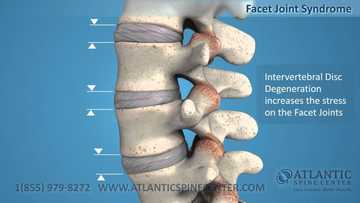Endoscopic Spine Surgery
Diagnostic Procedures
Pain Management Procedures
Traditional Spine Fusion Surgeries
Mini Spine Fusion and Spine Disc Replacement
Facet Joint Block Injections
A facet joint block is the injection of a local anesthetic medication into or next to the facet joint. In most cases, a corticosteroid is injected.
Facet joint blocks are very simple and safe procedures. They are done under x-ray guidance and with the patient under light sedation. Patients are generally released after 1-2 hours after receiving facet block injections.
multimedia
What purposes does a facet joint block serve?
A facet block serves two purposes: diagnosis and treatment. If the patient receives 50% or greater pain relief for at least 2 hours after a facet block injection, it is likely that the facet joint is a source of the patient’s pain, as may happen with arthritis or injury. After the diagnosis is confirmed with repeat injections, the facet block is then used to reduce pain through the use of corticosteroids.
A medial branch nerve block refers to the use of a local anesthetic medication (injected into the suspected pain-generating site) to numb the medial branch nerves. A medial branch nerve block temporarily stops the transmission of pain signals from the facet joints to the brain.
So, the main goal of the facet joint block is to relieve back pain, which is thought to be caused by nerves that supply facet joints.
What are the benefits of facet joint block?
This procedure has two main benefits. It can be either a treatment of pain or can be used to find the source of pain. If the source of pain is determined, a patient can have a long-term pain relief.
The procedure itself is rather quick and easy. After the procedure, the patient is taken to the recovery area in the hospital, where a nurse checks blood pressure and pulse. Usually, you can go home about an hour after the procedure. But it is not advised to drive yourself.
What is the procedure for facet joint block?
Your medical team will give you a proper preparation plan for the procedure. But, there are general points, which we’ll cover.
Firstly, the medical team will assess whether it’s safe to perform the procedure. For example, for pregnant women, people with diabetes or people who tested positive for MRSA, the procedure is not recommended. Generally, before the procedure, you should continue to take your regular medications, including pain-relieving ones. But in some cases, you can be advised otherwise.
Before the procedure, you can prepare comfortable clothes, such as a dressing gown, and some reading or watching materials to spend time while waiting for the procedure. Also, you should make sure that you arranged a transfer from the hospital beforehand, for example, you asked your relative or friend to pick you up. It is advised not to drive after the procedure, so keep this in mind.
If sedation is involved, you shouldn’t eat in the morning before your procedure. You can have a drink, though.
As we’ve already mentioned, the procedure is minimally invasive and short. It takes about half an hour and a patient can go home the same day.
Generally, the procedure doesn’t need anesthesia, but some patients are offered sedation.
The facet joint block is performed while a patient lies face down. After sterilizing the injection site, a surgeon uses a needle to inject a local anesthetic. Then, using a CT scan or X-ray, the surgeon makes an injection into the joint. Usually, a steroid and pain reliever is injected into the joint. After the removal of the needle and prevention of bleeding, the procedure is finished.
The procedure can be called painless, except for the injection of local anesthesia, which can give a burning sensation at the injection site. After the procedure patients can feel that the injection site is sore.
What are the complications of facet joint block?
You should know that this procedure shouldn’t be performed if a patient has an active infection, such as flu, cold, high blood pressure, fever, etc. Also, it can be recommended to avoid it if you take blood-thinning medications.
Even though facet joint injections are quite safe, there are some risks associated with this procedure. Among the risks of the procedure are excessive bleeding, infection, nerve injury, allergic reaction to medications used.
Swelling and pain around the injection site are the most common side effects of the procedure. Some unpleasant sensations, such as numbness or weakness, can last for several hours after the procedure. In some cases, patients can have increased back pain, especially in the region targeted by the procedure, which is usually temporary. Patients can be advised to use cold packs to put them on the swelling.
Some more serious side effects are related to infections. However, the chance of infection is very low, as the injection is small.
Because steroids were used, a patient can have diarrhea and abdominal pain, flushing or redness to the face.
Usually, the side effects go away after a while, from a couple of hours to a week after the procedure.
Facet joint block recovery
The recovery after this procedure is very fast. The injection site can be sore or sensitive for a day or two. Usually, patients return home the same day after the procedure and can return to their normal activities the next day.
Remember that if you don’t feel instant pain relief, it might take time for the medication to take effect.
